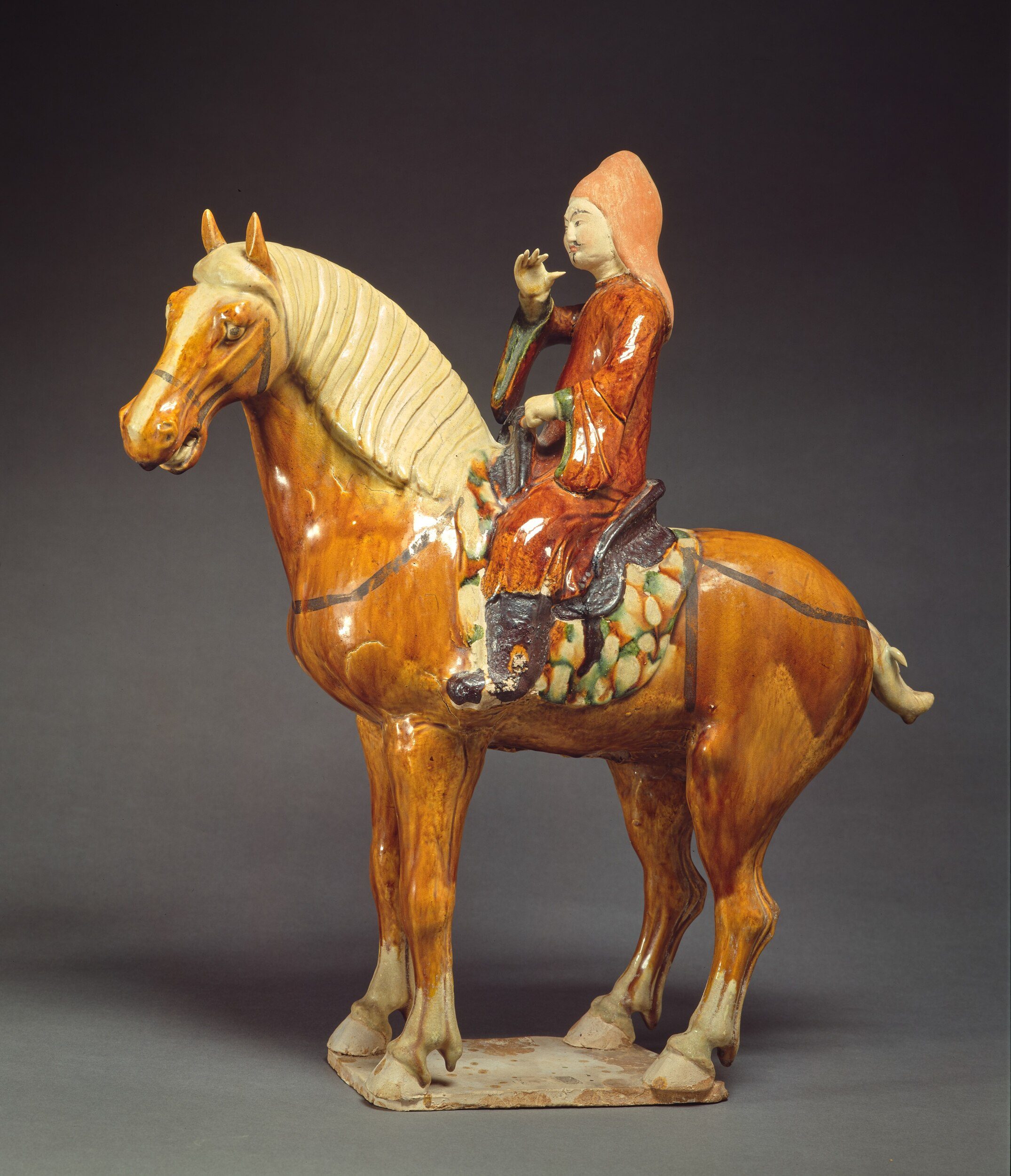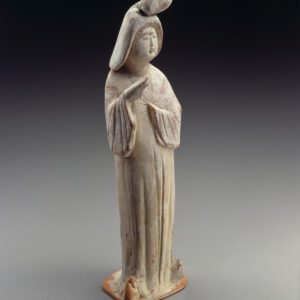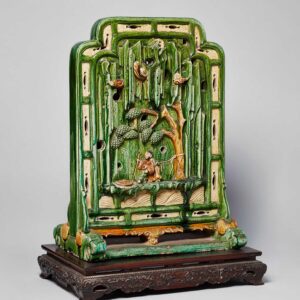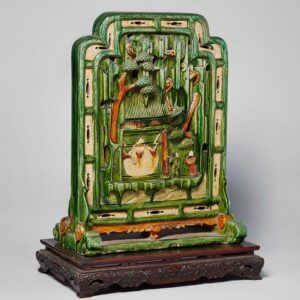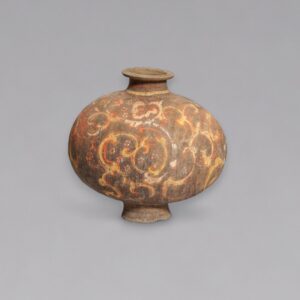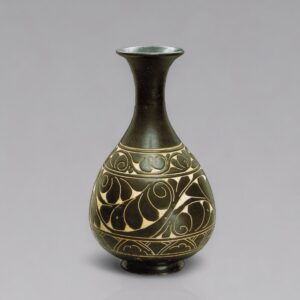The moulded figure seated on a horse, sitting upright with his right hand raised to play the flute, wearing a long, round-neck tunic, long trousers, boots and a cloth cap. The light beige terracotta body is covered in green, amber and colourless glaze, highlighted with red and black pigments. The Ferghana horse is stationary, with its head slightly turned to the left. The mane, knotted tail and stockings of the superb, robust animal covered in a cream-coloured glaze. Beneath the dark-glazed saddle, the saddlecloth is adorned with a subtle interplay of green, amber and cream glaze, invoking the richness of the fabric.
A ‘sancai’ pottery figure of an equestrian musician (Tang dynasty, 618-907 AD)
Description
Dimensions: 40.5cm high
Provenance:
Spink & Son, London, 10 October 1984
A private Belgian collection
The result of Oxford Authentication Ltd thermoluminescence test no. 366h71 is consistent with the dating of this piece.
The moulded figure seated on a horse, sitting upright with his right hand raised to play the flute, wearing a long, round-neck tunic, long trousers, boots and a cloth cap. The light beige terracotta body is covered in green, amber and colourless glaze, highlighted with red and black pigments. The Ferghana horse is stationary, with its head slightly turned to the left. The mane, knotted tail and stockings of the superb, robust animal covered in a cream-coloured glaze. Beneath the dark-glazed saddle, the saddlecloth is adorned with a subtle interplay of green, amber and cream glaze, invoking the richness of the fabric.
This figure belongs to a mounted band that was part of a pottery funerary procession; lavish displays of status and wealth. Introduced to China from the Fergana Valley in Central Asia during the Han dynasty, Ferghana horses, also known as ‘heavenly horses’, were a highly prized breed among China’s elite. They were known for their power, speed and endurance and became symbols of power and prosperity. The present example therefore can also be seen as a symbol of the ruling aristocracy at the height of the Tang dynasty.
Compare an identical piece, from the same mould but with different glaze and pigments in the Musée Guimet. Paris, illustrated in William Watson, ‘Tang and Liao Ceramics’, New York, 1984, p. 214, fig. 245. A very similar piece was offered by Christie’s New York, ‘The Aurelius Parenti Collection of Chinese Ceramic Sculpture’, June 3, 1988, lot 224. Another similar equestrian figure, a drummer, was unearthed in Loyang, and is currently in the Henan Provincial Museum, see ‘Tang Sancai, zhongguo taoci quanyi’, vol. 7, 1983, pl. 88 left.
